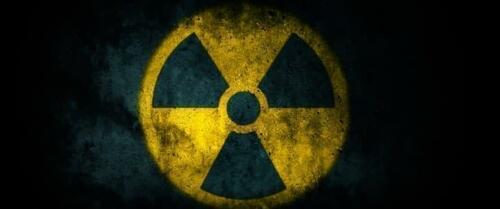Has Nuclear Energy Finally Overcome The Chernobyl Disaster?
Authored by Felicity Bradstock via OilPrice.com,
-
Accidents like Chornobyl and Fukushima have damaged the public perception of nuclear power, leading to decreased investment and development.
-
Nuclear power is a low-carbon energy source with a proven track record of safety and reliability.
-
Despite past challenges, there is a growing global interest in nuclear power as a key component of a sustainable energy future.
Three major nuclear events throughout the history of nuclear power production have tainted the image of the clean energy source, according to recent reports and years of public opinion polls. The events at Chornobyl, Fukushima, and Three Mile Island swayed public opinion against nuclear power in many areas of the world for several decades, encouraging governments worldwide to move away from the clean energy source in favor of continued fossil fuel use.
Today’s energy mix could look extremely different if these events had not occurred, or greater efforts had been taken to raise public awareness over nuclear safety.
According to a recent report published by a think tank from the ex-U.K. Prime Minister Tony Blair – Tony Blair Institute (TBI), the nuclear power industry could have had a significant impact on global carbon emissions had it continued to grow at the same pace as before the 1986 Chornobyl nuclear disaster.
It predicted that carbon emissions would be around 6 percent lower today if a different narrative of nuclear energy had been established following the Chornobyl disaster, rather than one that spurred “unfounded public concern”.
The Chornobyl nuclear power station was located in Pryp’yat, 10 miles northwest of the city of Chornobyl and 65 miles north of Kyiv. It consisted of four reactors, each with a 1 GW capacity. The disaster happened on April 25–26, 1986, when workers shut down the reactor’s power-regulating system and its emergency safety systems and withdrew most of the control rods from its core while it ran at 7 percent power. A combination of human errors led to several explosions triggering a large fireball that blew off the heavy steel and concrete lid of the reactor, which resulted in a partial meltdown of the core. This led large quantities of radioactive material to go into the atmosphere and spread for miles around.
Around 30,000 inhabitants were evacuated from Pryp’yat and a cover-up took place by the Soviet Union. However, Swedish monitoring stations reported abnormally high levels of wind-transported radioactivity, which led authorities to admit there had been an accident. The attempted cover-up and delayed information about the event led to an international outcry over the dangers of radioactive waste. The heat and the radioactivity leaking from the reactor core started to be contained in May, and the highly radioactive reactor core was later enclosed in a concrete-and-steel sarcophagus. Reports on the number of deaths associated with both the disaster and the lingering radioactivity in the region vary widely.
The TBI report found that over 400 reactors commenced operations in the three decades before Chornobyl, but fewer than 200 had been commissioned in the almost three decades since. The report stated, “The result is that nuclear energy has never become the ubiquitous power source many had projected, with countries instead turning towards alternatives such as coal and gas.” It suggests that two other major nuclear incidents – Fukushima and Three Mile Island – also harmed the public perception of nuclear power.
Nevertheless, the TBI predicts the world will see a “new nuclear age” in the coming years, as environmentalists and governments worldwide double down on their commitment to nuclear power as part of a green energy transition. Nuclear energy has been providing abundant clean power to countries worldwide for around 70 years. Unlike most renewable energy sources, nuclear energy can be produced 24 hours a day, rain or shine, providing a stable flow of clean power to the grid. Some new-generation power plants are now capable of operating for up to 80 years, which is far longer than gas- or coal-fired power stations, as well as many renewable installations.
In addition, a multitude of studies over several decades show that fossil fuels are overwhelmingly more harmful to health and the environment than nuclear power. Experts think that air pollution from fossil fuels is responsible for around 7 million deaths a year, while nuclear energy carries a similar level of risk to wind power, which is around 350 times safer than coal. Per terawatt-hour of energy production, coal is thought to cause 24.6 deaths, oil 18.4 deaths, natural gas 2.8 deaths and nuclear energy 0.07 deaths.
The International Atomic Energy Agency says that nuclear power plants are among “the safest and most secure facilities in the world.” They must adhere to strict international safety standards and both training and best practices have become stricter and more internationally standardized in recent decades. Further, nuclear waste storage facilities are highly protected against earthquakes, tornadoes, and other potential disasters.
The lead author of the report Tone Langengen stated, “A new nuclear age is beginning. But whether it continues will depend entirely on whether leaders are willing to move past false alarm and ideology, making judgment based upon fact-based assessment of risk.”
Tyler Durden
Mon, 12/09/2024 – 18:25


